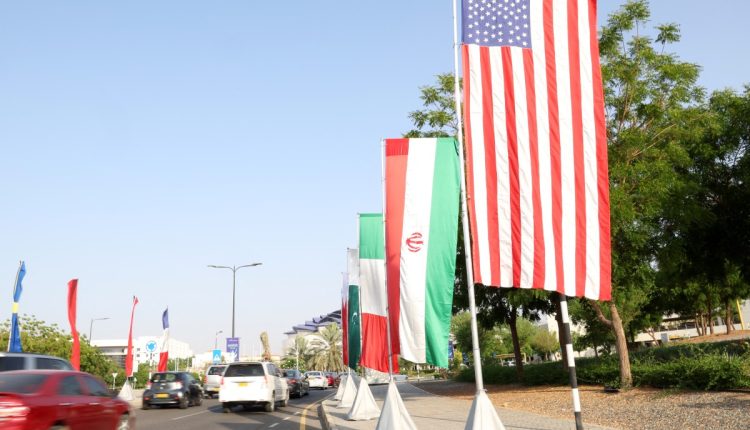The Middle East: Conflicts Over Regional Redefinition
By Mohammad Sayed Rassas
Two hours after Israeli Prime Minister Benjamin Netanyahu concluded his speech before the United Nations General Assembly in New York on September 27, Israeli jets killed Hezbollah leader Hassan Nasrallah in a raid on his headquarters in the southern suburbs of Beirut. The next day, from Jerusalem, Netanyahu described Nasrallah’s death as “reshaping the power structure in the Middle East.”
The explanation for this seems to be what the New York Times reported on April 16, that the encouragement to strike Iran, first through its proxies and then targeting its leadership, among circles in Tel Aviv and Washington began with the revelation of the weakness of Iran’s ballistic missile strike capability on the night of April 13-14, 2024, against Israel. Meanwhile, former US President Joe Biden had prevented Netanyahu from expanding the war in Gaza towards Hezbollah or Iran in the weeks following the Hamas attack on October 7, 2023.
It is likely that the initiation of the Israeli ground war against Lebanon just days before Nasrallah’s death can be explained by this assessment of Iranian weakness, as well as the fact that Nasrallah was killed after he subsequently revealed that the Israelis had previously refrained from killing him. Most probably, the dramatic weakening of Hezbollah in that war, which concluded on November 27, along with the establishment of an international-regional atmosphere to initiate efforts to topple Bashar al-Assad on the same day, aimed to significantly weaken the head of the Iranian axis after incapacitating its arms in Lebanon and Gaza and isolating them in Syria—providing a land bridge for the Iranian axis between Tehran and the Mediterranean, in preparation for striking this leadership later. However, US President Donald Trump withdrew from a strike he had agreed upon with Netanyahu in May, preferring negotiations over the nuclear issue.
Now, a year and a half after the Hamas attack, Iran is arguably weakened and no longer the “regional superpower,” as General Rahim Safavi, a current adviser to Iranian Leader Ali Khamenei and former commander of the Islamic Revolutionary Guard Corps (IRGC), described it in 2013. If what Khamenei said in September 2023, weeks before the Hamas attack, about “signs of weakness and decline of the hostile bloc” against Iran was accurate, it is no longer true in 2025 after Tehran’s defeats in Gaza, Lebanon, and Syria, and after the United States has emerged as the biggest player in the region, followed by Israel.
Netanyahu’s call for “reconciliation between Mecca and Jerusalem” in his speech in New York, following his orders to kill Nasrallah, is notable. It might be understandable if he did not call for reconciliation with Qom and Najaf, but the omission of any mention of Al-Azhar or Istanbul seems significant. The phrase “reconciliation between Mecca and Jerusalem” was preceded by “reconciliation between Islam and Judaism,” which in turn preceded “reconciliation between the Arab world and Israel.” Most likely, Netanyahu understood that Washington has a tendency to canonize Saudi Crown Prince Mohammed bin Salman as a symbol of Islam, rather than Egypt or Turkey, while positioning him as a leader of the Arabs as well. This reflects Washington’s decision to turn the page on an era in which it handed Iraq over to Iran and the local Shiite forces loyal to it, as well as Washington’s evolving stance regarding Tehran’s regional role—a role that had previously been a price extracted from the White House in exchange for signing the 2015 nuclear deal, a move that faced opposition from allies in Tel Aviv and Riyadh at that time during President Barack Obama’s administration.
Moreover, it is essential to note that the trend that Washington encouraged in the summer and autumn of 2023, aimed at normalizing relations between Riyadh and Tel Aviv, was accompanied by the Indian Corridor Project, the establishment of a Saudi nuclear reactor built by Washington, and a US-Saudi defense treaty. According to Biden’s perspective articulated in an article in the Washington Post on November 20, 2023, the Hamas attack sought to undermine all of this.
If we now look at the Middle Eastern landscape, we will see the weakness of Hezbollah in the Lebanese political map, the weakness of Hamas in the Palestinian arena, and similarly the Houthis in Yemen. This weakness is also beginning to appear in Iraq, where the local Iranian-aligned forces are in their weakest state since the fall of Saddam Hussein. If we accumulate these weaknesses and add the potential fall of Assad, it becomes clear that Khamenei is weakened and is no longer the holder of “regional superpower” status.
This seems to be the moment that Trump preferred, contrary to Netanyahu’s views, to negotiate with Iran while it is weak, without completely ruling out the military option. The leak of information regarding a planned joint Israeli-American strike set for the next month to the New York Times was likely deliberate during the week negotiations began in Muscat, reflecting a style reminiscent of Henry Kissinger’s approach to “negotiating under fire.” Undoubtedly, this leak was American and not Israeli.
This Iranian weakness explains Tehran’s recent rapprochement with Riyadh. The new Middle Eastern landscape also sheds light on the American-Russian negotiations regarding Ukraine and the Russian-Ukrainian talks in Saudi Arabia. There are reports suggesting that Trump will meet with his Russian counterpart Vladimir Putin there as well, which could also serve as a venue for future Iranian nuclear negotiations.
This new Saudi strength could help shape the upcoming Syrian landscape, where Riyadh—backed by the United States with Egyptian and certainly Israeli approval—will not allow President Recep Tayyip Erdoğan in Damascus to have what Khamenei had in Baghdad after the fall of Saddam Hussein. Moreover, Riyadh’s power helps to explain the UAE’s abandonment of Ahmed al-Awda in southern Syria and Putin’s rapprochement with the new Syrian authority.
Regarding the Palestinian issue, one can link this new regional Saudi power to Riyadh’s condition of establishing a Palestinian state as a prerequisite for normalization with Tel Aviv, a requirement that was absent for Saudi Arabia in 2023. It is also notable that a U.S.-Saudi agreement was ultimately reached for the construction of a Saudi nuclear reactor, without tying it to normalization with Israel.




Comments are closed.